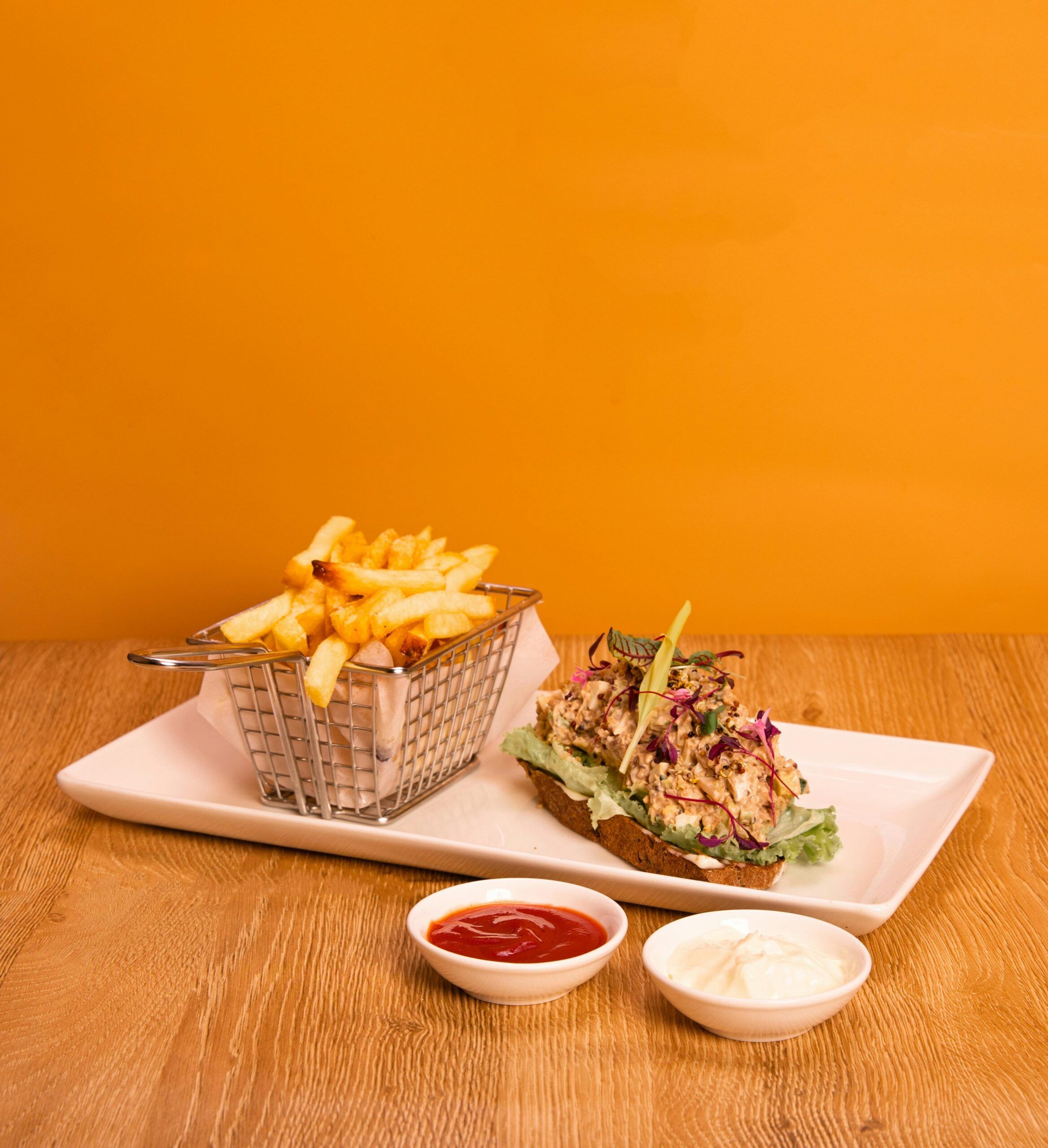- What Is Menu Analytics?
- Why Menu Data Matters More Than Ever
- Key Metrics To Track In Your Menu Analytics
- Use Analytics To Identify Star Items And Dogs
- Optimizing Pricing Based On Performance
- Designing A More Profitable Menu Layout
- Using Orders.co To Automate Menu Optimization
- Turn Insights Into Profits With Orders.co
- FAQ
Running a restaurant today means more than just serving good food. It also means keeping up with rising costs, changing customer habits, and growing competition.
One of the best ways to stay ahead is by looking closely at what’s on your menu and how it performs.
Menu analytics helps restaurant owners and operators make better decisions about pricing, item placement, and what stays or goes. Instead of guessing, you use real data to guide your choices.
In this article, we’ll walk through what menu analytics is, why it matters, and how to use it to improve your menu’s performance.
We’ll also show you how Orders.co makes this process easier by bringing all your data into one place, so you can act quickly and confidently.
Key Takeaways
- Menu analytics helps you understand which dishes drive profit—and which don’t.
- Tracking sales, margins, and prep time reveals what to keep, cut, or reprice.
- Data-backed pricing and layout decisions can significantly boost revenue.
- Tools like Orders.co automate performance tracking and menu updates across all channels.
- Real-time insights lead to faster decisions, higher margins, and better customer experiences.
What Is Menu Analytics?
Menu analytics is the process of using real data to understand how your menu items are performing. It helps you see what’s selling, what’s not, and how each item affects your bottom line.
Here are a few common data points restaurants track:
When you look at these numbers together, you can spot trends. Maybe your top-selling item doesn’t bring in much profit.
Or maybe a less popular dish is actually your most profitable. Menu analytics helps you make sense of that.
Instead of relying on instinct, you base your decisions on facts. That leads to better menus and more money in the bank.
Orders.co makes it easy to track these metrics without jumping between platforms or spreadsheets. You get everything in one place, organized and ready to act on.
Want to start seeing how your menu stacks up? Explore Orders.co’s menu management tools.
Why Menu Data Matters More Than Ever
Running a restaurant today involves more than just great food and service. Rising food costs, shifting customer habits, and tighter margins mean every decision counts.
According to the National Restaurant Association, menu prices at full-service restaurants increased by 4.2% year-over-year as of May 2025, while limited-service establishments saw a 3.5% rise. This trend underscores the importance of understanding how each menu item contributes to your bottom
Menu analytics provides insights into which dishes are profitable and which ones may be costing you money. By analyzing sales data, contribution margins, and customer preferences, you can make informed decisions about pricing, portion sizes, and menu design.
With tools like Orders.co, you can access real-time data across all your locations, helping you identify trends and adjust your menu accordingly. This centralized approach simplifies the decision-making process, allowing you to focus on delivering quality food and service.
Want to see how menu analytics can benefit your restaurant? See How It Works In Real Time
Key Metrics To Track In Your Menu Analytics
If you’re new to menu analytics, knowing what to track is half the battle. These metrics help you understand what’s working, and what’s not, so you can make smarter menu decisions.
Here are the key data points every restaurant should monitor:
- Item Sales: How often is each item ordered? This helps you spot customer favorites and identify slow movers.
- Contribution Margin: This tells you how much profit each item brings in after accounting for food costs. High-selling items with low margins might look good, but they can eat into your profits.
- Popularity vs. Profitability: Use a matrix to compare these two metrics side by side. A dish might be popular but not profitable, or profitable but rarely ordered. Menu analytics helps you visualize the difference.
- Voids and Returns: These indicate issues with prep, quality, or customer satisfaction. High voids might mean a dish isn’t worth keeping on the menu.
- Prep Time: Dishes that take longer to make may slow down your kitchen, especially during peak hours. Comparing prep time to sales volume helps you decide if the item’s worth the effort.
Tracking these numbers regularly helps you identify trends and take action before they impact your bottom line.
Also, read:
- The Complete Guide to Menu Engineering: How to Make Your Menu Work for You
- Menu System Integration with POS: The Future of Seamless Restaurant Management
Use Analytics To Identify Star Items And Dogs
One of the most practical uses of menu analytics is figuring out which dishes are helping your business, and which ones are holding it back.
This is where the menu engineering matrix comes in. It helps you classify each item based on two things: how popular it is and how much profit it brings in.
Here are the four main menu categories:
When you track item sales and contribution margin together, these patterns become clear. You no longer need to guess which dishes should stay or go; the data tells you.
Orders.co helps you categorize your menu items automatically. No manual tracking, just a clear view of what to prioritize.
Optimizing Pricing Based On Performance
Once you understand how your dishes perform, it’s easier to make pricing decisions that protect your margins without turning customers away.
Start by reviewing items that are both popular and profitable. If they consistently sell well, you may be able to raise the price slightly without affecting demand.
On the other hand, if a high-cost item isn’t moving, the price may be too high, or the perceived value may not be clear to your guests.
In a recent report, the USDA noted that food-away-from-home prices rose 3.5% to 4.2% year-over-year across restaurant types in 2025.
With food costs still unpredictable, restaurants need to revisit pricing more frequently, not just during seasonal updates.
Menu analytics gives you a clear view of how to respond. Here’s how you can act on what you see:
- Raise prices on popular, high-margin items: Customers already love them, and small price increases often go unnoticed.
- Reprice or reposition items with low sales and low margins: If they aren’t selling and don’t contribute much profit, they may need to go.
- Bundle items to increase perceived value: Turn slow-moving items into add-ons or combos to boost order size.
- Review portion sizes: Large portions may be hurting margins without adding value.
Orders.co lets you test pricing changes across your locations and platforms, all from one dashboard. You can make adjustments, monitor the results, and fine-tune your pricing strategy without delay.
Designing A More Profitable Menu Layout
Your menu’s layout isn’t just about looks. Where and how you present items can influence what customers order and how much they spend.
Menu analytics helps you design your layout with purpose. By knowing which items are most profitable or popular, you can position them where customers are more likely to see and choose them.
Here are a few proven layout strategies to consider:
When real menu performance data informs these layout techniques, they work even better. You’re not guessing what to highlight, you’re prioritizing what’s proven to work.
Orders.co provides you with well-planned menu templates and gives you access to print them at any time.
You can easily see which items deserve top billing and make layout decisions based on sales and profit, not gut feeling.
Using Orders.co To Automate Menu Optimization
If you’re managing menus across multiple platforms, like your website, DoorDash, Uber Eats, and in-store, it’s easy to feel overwhelmed. Small changes take time. Updates get missed. Errors pop up.
Orders.co simplifies this process by pulling all your menu data into one place.
You can view performance metrics, make updates, and push changes across every channel, without logging into each one separately.
Here’s what automation looks like with Orders.co:
- Centralized menu dashboard: View and manage all your items from a single screen. No more juggling different systems or retyping the same updates.
- Real-time performance tracking: Know which items are selling, which aren’t, and what needs to change, based on actual customer behavior.
- Multi-location support: Customize menus by location or update them all at once. It’s easy to test changes and see what works best.
- Instant syncing: When you change a price, description, or photo, it’s updated everywhere automatically.
This kind of automation means fewer mistakes, faster changes, and better decisions backed by real-time insights.
Whether you’re running one location or ten, Orders.co gives you the tools to keep your menus current, competitive, and aligned with your goals.
Turn Insights Into Profits With Orders.co
Your menu is a major driver of profit, but it’s only one piece of your restaurant’s performance. To stay ahead, you need more than just menu analytics. You need the right tools to help you act on that data, fast.
Orders.co brings everything together in one place, not just your menu, but your orders, website, and customer engagement, too.
Here’s what else you can manage with Orders.co:
- AI-Powered Website Builder: Launch a branded, commission-free ordering site in minutes, no coding or third parties required.
- Unified Online Orders Management: Pull in all your delivery and takeout orders from apps like DoorDash, Uber Eats, and Grubhub into one easy-to-use dashboard.
- Customer Marketing Tools: Send automated SMS and email campaigns based on customer behavior. Encourage repeat orders without lifting a finger.
- Review and Feedback Tracking: Monitor guest satisfaction in real-time so you can resolve issues and maintain high ratings.
When you combine these tools with your menu data, it becomes easier to run your restaurant with less stress and more confidence.
Want a smarter, simpler way to grow your restaurant? Get started with Orders.co and see how it all comes together.
FAQ
What’s the difference between menu analytics and restaurant analytics?
Menu analytics focuses specifically on how individual menu items perform, like sales volume, profit margins, and customer preferences. Restaurant analytics is a broader category that includes operations, labor efficiency, customer experience, and overall sales trends. While both are valuable, menu analytics gives you faster and more direct opportunities to improve profits.
How often should I review my menu performance?
Ideally, you should look at menu performance data at least once a month. If you’re running a high-volume location or managing multiple branches, weekly reviews can be even more useful. Frequent check-ins help you catch trends early and make small, profitable adjustments before they become urgent problems.
What’s the best way to collect customer feedback on menu items?
Along with tracking sales and returns, it’s smart to monitor customer reviews and comments. Orders.co includes tools to gather and review customer feedback across your platforms. When you pair that with restaurant data insights, you get a clearer picture of why certain items are performing well or not.
Can I use menu data to plan promotions?
Yes. Menu analytics helps you identify the best items to feature in promotions. For example, promoting a popular, high-margin dish can increase profits without cutting into your earnings. If an item has high profit but low visibility, a limited-time offer might help boost awareness and test its potential.
Do I need a tech background to use a platform like Orders.co?
No tech skills needed. Orders.co is built for restaurant owners and managers, not IT professionals. The tools are visual, simple to use, and designed around your daily operations. You’ll get clear reports and menu performance analysis without needing to dig through spreadsheets or dashboards full of noise.


